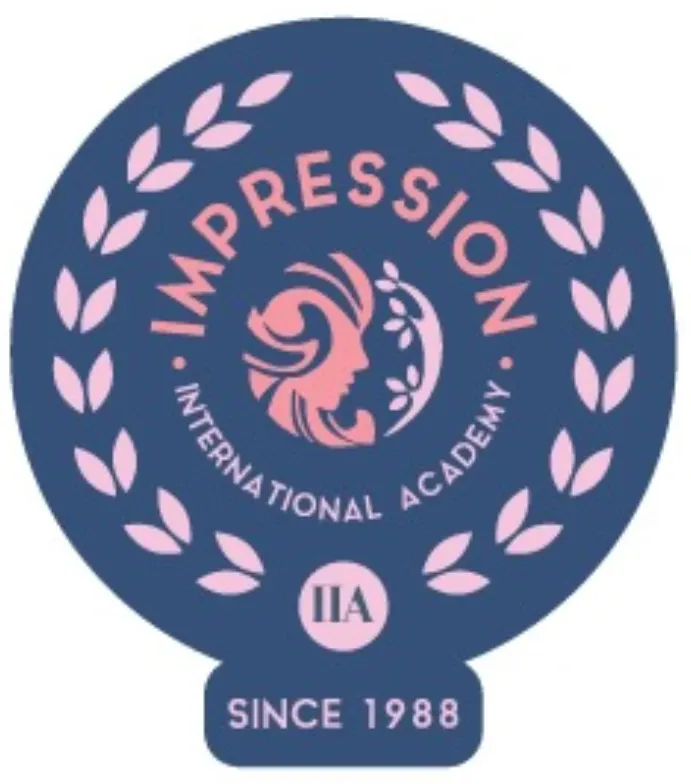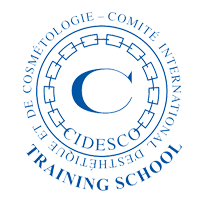Tips to Becoming a Professional Makeup Artist (India Edition)
- Impression International Academy

- 4 days ago
- 5 min read

A salon-verified roadmap from first brush to paid bookings — perfect for beginners, career switchers, and ambitious hobbyists in Pune.
Why this guide?
If you love transforming faces and want a career that’s creative, flexible, and well-paid (especially during wedding season), becoming a professional makeup artist is a smart move. But the internet can make it confusing: do you really need a course? What goes in a starter kit? How do you find clients who pay on time?
This guide gives you a clear, India-specific path—tailored for our climate, skin tones, and the realities of the bridal and fashion market in cities like Pune. You’ll learn the skills that matter, the kit that won’t drain your savings, portfolio tactics that attract bookings, and the business basics nobody tells you.
Clinic note: Everything here is battle-tested at Impression Beauty Clinic—on real brides, editorial shoots, and humid monsoon days.
1) Choose your path (so you train with purpose)
Different niches need different skills, timelines, and kits:
Bridal / Occasion (India’s biggest market): Longevity + colour theory for Indian outfits, haldi/sangeet/pherā lighting, and sweat-proof placement.
Salon / Party Makeup: Speed, hygiene, skin-prep mastery, and soft glam that photographs well in phone cameras.
Editorial / Fashion: Conceptual looks, clean skin, precision, working with photographers, moodboards, backstage pace.
Film / TV / Theatre: Continuity, on-set etiquette, natural-but-camera-ready finishes, quick touchups.
SFX / Creative: Prosthetics, body paint, safety. (Specialised; great if you love fantasy looks.)
Teaching / Content Creation: Camera presence, step clarity, lighting, and editing your reels.
Pick one primary niche for your first 6 months. It simplifies your kit, practice plan, and portfolio.
2) Get the foundations right (technique beats trends)
Skin prep is half the work: Understand skin types, dehydration vs. oiliness, and how primers behave in heat.
Colour theory for Indian skin: Undertones (golden/olive/neutral), correcting hyperpigmentation and beard shadow, and avoiding ashy finishes.
Eye-shape mapping: Hooded, monolid, deep-set, round—placing depth slightly above the natural crease lifts every eye.
Base that lasts: Sheer, buildable layers > one heavy coat. Creams under powders for monsoon-proofing.
Hygiene & safety (non-negotiable): Brush sanitising, disposables for mascara/gloss, spatulas for creams, never double-dip, patch-test for sensitive clients.
Pro drill: Do a full bridal eye within 25 minutes (timer on). Speed grows bookings.
3) Do you need a course? (and how to pick one)
You can learn basics online, but a good in-person course accelerates your career: live corrections, real models, portfolio shots, and industry references.
What to look for:
Small batches, real-skin practice (not just one model type).
Curriculum covering bridal, hygiene, colour correction, eye shapes, kit building, photoshoot etiquette, pricing, contracts.
Trainer portfolio you respect.
Career support: assisting opportunities, mock trials, portfolio day.
Certification that’s recognised (e.g., CIDESCO/VTCT-style standards or reputed local academies).
At Impression Beauty Clinic (Pune), our makeup courses are taught by working artists. Book a free counselling call or a demo class to see the teaching style and kit advice you’ll actually use.
4) Build a starter kit (India-smart, budget-wise)
Start compact; upgrade as bookings grow. Focus on performance + hygiene.
Complexion
Multi-finish foundations (2–3 shades to mix), correctors (peach/orange), concealers, loose powder, compact for touch-ups.
Setting spray that plays nice with humidity.
Eyes
Neutral matte palette + 1–2 shimmers (champagne/copper/antique gold).
Gel/pen liner, long-wear kajal, mascara (plus disposables), brow powder/pencil.
Cheeks & Lips
Cream + powder blush (warm rose/coral), soft bronzer/contour, highlighter (fine-milled).
Lip pencils (nude, pink, red), long-wear lip colours.
Tools & hygiene
2 fluffy blenders, 1 tapered crease, 1 flat shader, 1 smudger, 1 foundation brush, 1 stippling/sponge, powder brush.
Brush shampoo, sanitiser spray, spatula + mixing plate, disposables (wands, cotton buds, tissues).
Mini fan, blotting sheets, micro-scissors, lash glue & tweezers.
Upgrade path: Invest first in base products (undertone-friendly) and brushes. Trend palettes can wait.
5) Practice plan that actually works
Face-chart to face: Sketch placement, then replicate on a model within 45 minutes.
Undertone matching: Create a shade library by mixing; note ratios that worked on different skin tones.
Timed drills: Bridal base in 15 min, classic liner in 5, smokey eye in 12.
Shoot your work: Natural light + a ring light. Capture front, 45°, and close-up of eyes.
Feedback loop: Weekly critique with a mentor or peer group. Re-do your weakest look within 48 hours.
6) Portfolio & Instagram that bring bookings
Think like a client: she wants to see skin, eyes, and how long it lasts.
Grid strategy: 60% brides/party looks, 30% reels (process, before/after), 10% education (quick tips).
Captions that convert: Mention skin type, undertone, products/technique, and longevity (“10 hours in outdoor sangeet”).
Highlights: “Brides”, “Trials”, “Price Guide”, “Courses”.
Local SEO on IG: Use location tags—Shivajinagar Pune, Fergusson College Road, Bridal Makeup Pune.
Get permission & credit: Simple model release; tag photographers, hair, outfit designers.
7) Assist senior artists (your fastest shortcut)
Write a short mail/DM with your 3 best photos, availability, and what you can help with (sanitising, lashes, touchups, draping support).
On the day: be early, wear neutrals, keep your kit tidy, ask before using their products, and never post client photos without permission.
Log everything you learned; recreate the look within 72 hours.
8) Money, pricing & client experience (business basics)
Packages: Bridal (engagement + wedding + reception), Party, Photoshoot. Offer add-ons (lashes, draping, hair, early-morning fee, travel).
Trials: Paid or redeemable against booking. Keep notes with photos and final lipstick shade.
Contract: Date/time, services, location, advance (non-refundable), cancellation terms, waiting charges, start-time policy.
Payments: UPI/card/cash invoice. Confirm balance before leaving the venue.
Service flow: Consultation → Skin prep → Look execution → Final check in daylight → Mini touch-up kit for the bride.
Template pack: At Impression, students receive sample price sheets + contract clauses to customise.
9) Wedding-day workflow (Pune-proof)
48 hours before: Confirm call time, address pin, parking, outfit colours, photographer’s schedule.
Kit check: Base shades, disposables, backup lash glue, oil-control sheets, fan, extra charger.
At venue: Set up near daylight, sanitise area, brief the client, and pace yourself (timer helps).
Monsoon fix: Creams under powders, thin layers, set each step, centre shimmer placement only.
Before you leave: Photos in phone + daylight, transfer touch-up kit (lipstick, blotting, cotton bud), collect final payment.
10) Keep learning (and stay booked)
Trends with purpose: Glass-skin inspired base, micro-shimmer lids, softly lifted outer corners.
Quarterly upskill: One workshop every 3 months (bridal, editorial hygiene, airbrush).
Community: Join local artist groups; volunteer for styled shoots to build editorial variety.
Common mistakes (and quick fixes)
Ashy base: Wrong undertone or over-powdering. Mix a warmer drop; set only the T-zone.
Patchy eyes: No transition shade or too much product. Use a clean brush to soften.
Creasing: Heavy emollients + no primer. Go lighter on eye cream; set the crease.
Over-edited photos: Clients want real skin. Keep texture; show before/afters honestly.
Under-charging: Track hours, products, travel. Raise prices with demand; publish a transparent range.
When to enrol at Impression Beauty Clinic (Pune)
You want structured training with feedback on real models.
You need a job-ready portfolio and help with pricing/contracts.
You’d like assisting opportunities and career mentoring.
Visit us: Fergusson College Road studio, Shivajinagar, PuneCall/WhatsApp: Book a free counselling call or demo class this week.
FAQs
How long does it take to go pro?
With focused practice and a solid course, many students take 3–6 months to start paid party looks; bridal can follow soon after.
Do I need expensive products to start?
No. Start with reliable, mid-range products and invest first in shade range + brushes.
Is a certificate required?
Clients care more about your portfolio and hygiene, but a recognised certificate helps with confidence, structure, and employability.
How much can I earn as a beginner?
Varies by city and niche. Most new artists start with party looks, then build to bridal packages (higher margins) as skills and reviews grow.
How do I get my first clients?
Friends/family trials → Instagram highlights → Referral bonus for your first 10 clients → Assist seniors for exposure and testimonials.
Author
Kalyani Umrani is a senior makeup artist and educator at Impression Beauty Clinic, Pune. She specialises in bridal and editorial looks for Indian skin tones and leads hands-on masterclasses for aspiring MUAs. Pushpa Bhagat, our Creative Director, ensures every curriculum and technique meets photoready standards.






Comments